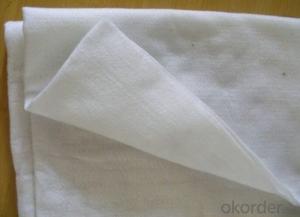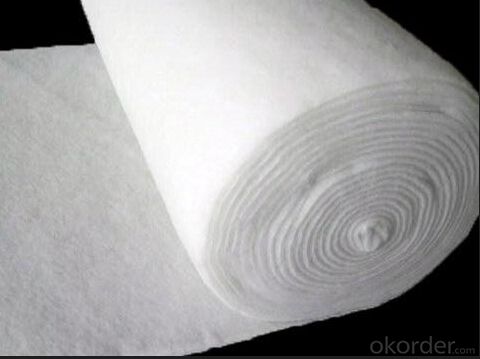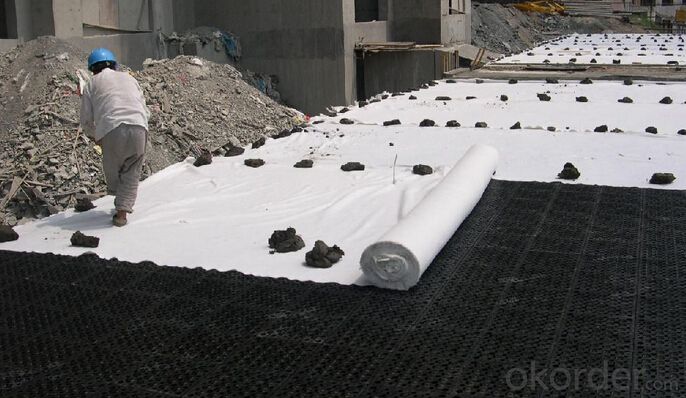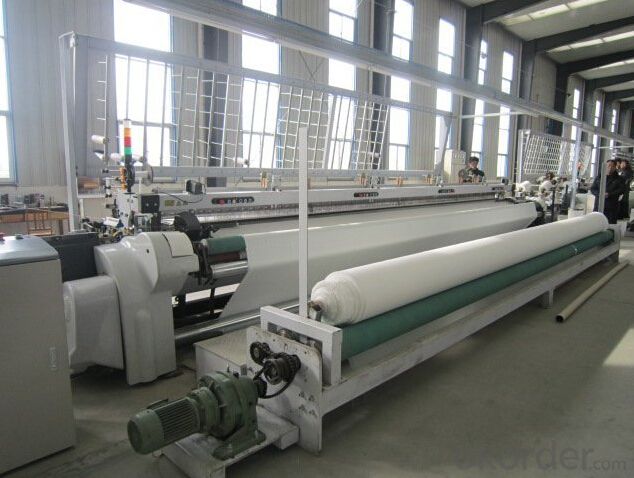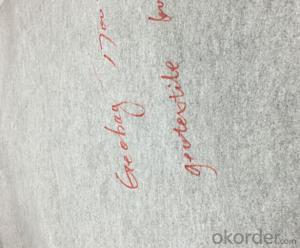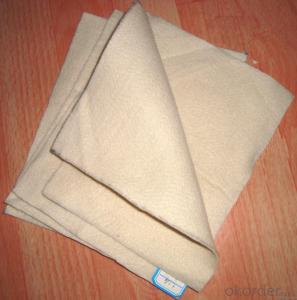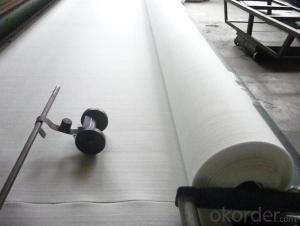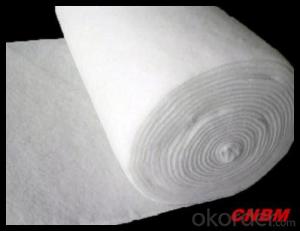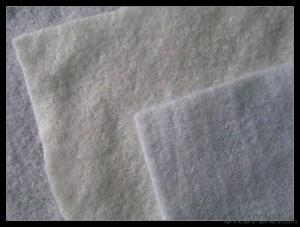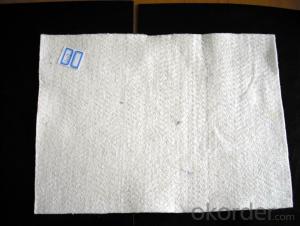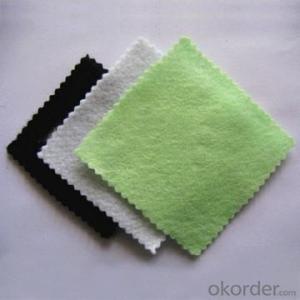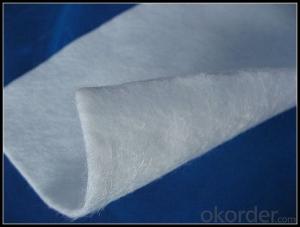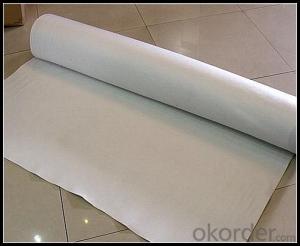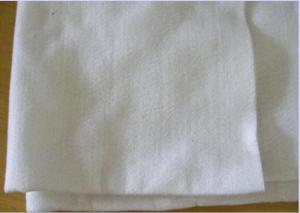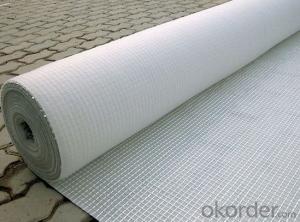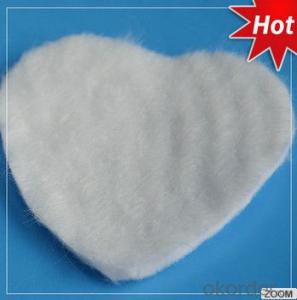8 Oz Nonwoven Geotextile Fabric - High Tensile Strength Polypropylene Geotextile
- Loading Port:
- China main port
- Payment Terms:
- TT OR LC
- Min Order Qty:
- 30000 m²
- Supply Capability:
- 300000 m²/month
OKorder Service Pledge
OKorder Financial Service
You Might Also Like
1,Brief Introduction of Polypropylene Geotextile
Material:Polypropylene
Weight:100~800g
Width:1~6m
Length:30~100m;or as your request
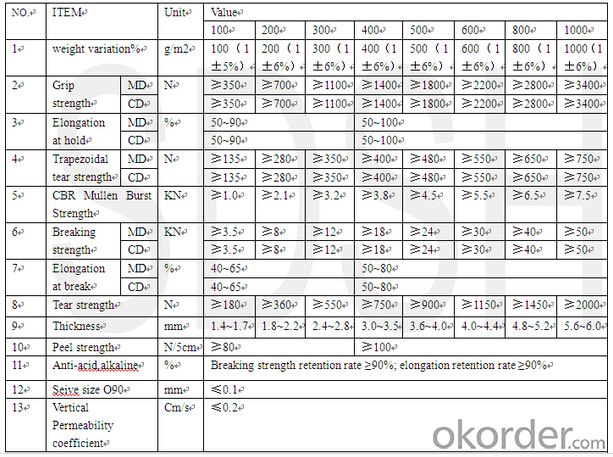
2,Feature of Polypropylene Geotextile
Good flexibility,permeability,filtration,separation and easy for construction,acid-proof, alkali-proof, sun-proof, mildew-proof and worm-proof. excellent water permeability, high tensile strength and shock strength, non-toxic and harmless.
3,Package of Polypropylene Geotextile
Packed in rolls or as per your request
4,Application of Polypropylene Geotextile
Used in the area of highway, airport, railway,dam, reclamation for filtration, separation drainage and protection. Our product can be used to keep soil from losing, collapsing, shocking and stable the base. Because of good wind resistant and frost resistant, the geotextile can also be used as protection of trees in winter.
5.FAQ
We have organized several common questions for our clients,may help you sincerely:
1>How about your company?
A manufacturer & supplier focuses on the production of geo textile and geo bag etc. We have exported this product to Amereica, Europe and South East Asia. Customized product is also available based on your detailed requirements.
2> What's the MOQ ?
We kindly recommend 1x40'HQ as the price would be economical based on large loading quantity.
3>How long can we receive the product after purchase?
It takes about 1 to 2 weeks to finish the production based on the specific production schedual. Then it will depend on the shipping time from loading port to the destination port.
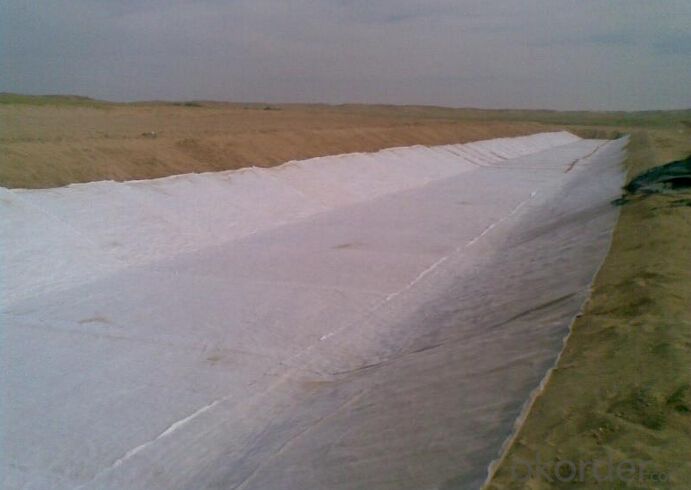
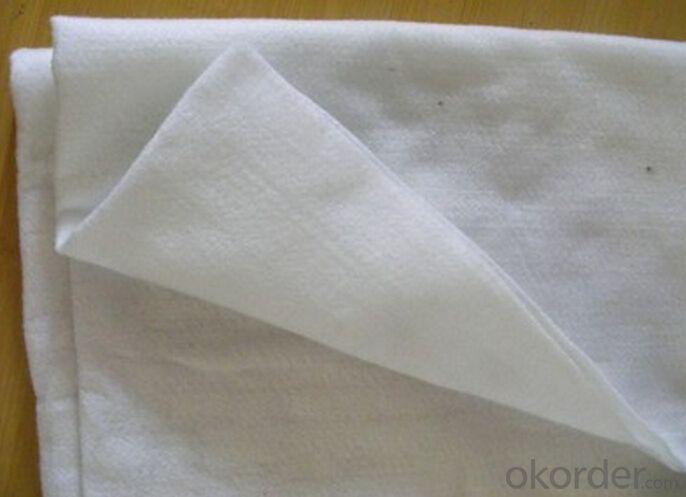
- Q: Can geotextiles be used in groundwater control?
- Yes, geotextiles can be used in groundwater control. Geotextiles are permeable fabrics that can be used to filter, separate, reinforce, or drain soil and water. In groundwater control, geotextiles can be used as a barrier to prevent the migration of fine particles and to control the flow of groundwater. They can be employed in various applications such as drainage systems, erosion control, and construction projects to manage and control groundwater effectively.
- Q: How do geotextiles improve the performance of coastal structures?
- Geotextiles improve the performance of coastal structures by providing erosion control, stabilizing the soil, and enhancing drainage. They act as a barrier to prevent soil erosion, reducing the likelihood of structural damage caused by waves, tides, and storm surges. Geotextiles also help stabilize the soil by increasing its shear strength, preventing the movement and settling of the structure. Additionally, they enhance drainage by allowing water to pass through while retaining the soil particles, preventing clogging and maintaining the structure's stability. Overall, geotextiles play a vital role in increasing the durability and longevity of coastal structures.
- Q: Can geotextiles be used for livestock waste management?
- Yes, geotextiles can be used for livestock waste management. Geotextiles are permeable fabrics that can be used to control erosion, filter water, and separate different materials. In the case of livestock waste management, geotextiles can be employed to contain and filter waste runoff, prevent soil contamination, and improve overall water quality. By providing an effective barrier, geotextiles help in preventing the leaching of harmful substances into the environment, thus aiding in the proper management of livestock waste.
- Q: What are the key considerations for geotextile installation in areas with high seismic activity?
- When installing geotextiles in areas with high seismic activity, there are several key considerations that need to be taken into account. Firstly, the geotextiles should be designed to withstand the ground movements and vibrations caused by earthquakes. This may involve using geotextiles with high tensile strength and puncture resistance. Secondly, proper anchoring and securing techniques should be employed to ensure that the geotextiles remain in place during seismic events. This may include using appropriate fixing methods such as soil nails or ground anchors. Additionally, the selection of geotextile materials should consider their ability to resist degradation caused by the cyclic loading and ground movements associated with earthquakes. Overall, the key considerations for geotextile installation in areas with high seismic activity involve designing for seismic forces, securing the geotextiles effectively, and choosing durable materials that can withstand the effects of earthquakes.
- Q: How do geotextiles help in preventing the loss of aggregate in unpaved roads?
- Geotextiles are used in unpaved roads to prevent the loss of aggregate by providing stabilization and reinforcement. When placed between the soil and aggregate layers, geotextiles act as a barrier that allows water to pass through while retaining the aggregate, effectively preventing erosion and maintaining the road's integrity.
- Q: What is a polyester filament geotextile? Polyester filament geotextile
- In addition to a good mechanical energy, but also has a good vertical and horizontal drainage and good extension of energy and high resistance to biological, acid and alkali, anti-aging and other chemical stability. At the same time, also has a wide range of pore size, tortuous pore distribution, excellent permeability and filtration can be polyester filament geotextile purposes: water conservancy project dam and slope protection filter, channel isolation, seepage; Airport runway foundation isolation, filter, drainage, soil slope, retaining wall and road reinforcement, drainage; port engineering soft foundation treatment, beach embankment, harbor wharf and breakwater reinforcement, drainage; polyester filament geotextile Has been widely used in the field of infrastructure construction, and gradually applied to a wider range of areas. Polyester filament geotextile technical parameter table (GBT-1998): No. Remarks 1 unit area mass deviation% -6-6-6-5-5-5-5-5-4-4-42 thickness, mm ≥ 553 Width deviation% -054 breaking strength KNM ≥ vertical and horizontal 5 elongation at break% 40-806CBR breaking strength KN ≥ 707 equivalent aperture 090, mm007-02
- Q: What is the latest price of geotextile?
- Per ton of national standard short geotextile 7000-8000 yuan, filament geotextile per ton - yuan.
- Q: How do geotextiles help with reinforcement of soil slopes?
- Geotextiles help with the reinforcement of soil slopes by providing a stable and strong barrier that prevents soil erosion. They act as a protective layer, distributing the weight and forces evenly, enhancing the stability of the slope. Additionally, geotextiles separate the soil layers, preventing intermixing and promoting drainage, which further contributes to the reinforcement of the slope.
- Q: Can geotextiles be used for reinforcement of road embankments?
- Yes, geotextiles can be used for reinforcement of road embankments. They are commonly used to improve the stability, strength, and durability of road embankments by providing reinforcement and preventing soil erosion. Geotextiles act as a barrier, distributing the load and reducing the potential for settlement or failure. Additionally, they can help with drainage and filtration, enhancing the performance and longevity of road embankments.
- Q: What are the considerations for geotextile selection in coastal engineering projects?
- When selecting geotextiles for coastal engineering projects, several considerations need to be taken into account. First, the geotextile should have a high tensile strength and durability to withstand the harsh coastal environment, including wave action and fluctuating water levels. It should also possess excellent filtration properties to prevent the migration of fine particles while allowing water to pass through. Additionally, the geotextile's permeability and hydraulic conductivity should be considered to ensure proper drainage and avoid the buildup of hydrostatic pressure. The material's resistance to biological degradation and UV radiation is crucial for long-term performance. Lastly, the geotextile should be compatible with the surrounding materials and easy to install and maintain, minimizing disruptions to the coastal ecosystem and reducing overall project costs.
Send your message to us
8 Oz Nonwoven Geotextile Fabric - High Tensile Strength Polypropylene Geotextile
- Loading Port:
- China main port
- Payment Terms:
- TT OR LC
- Min Order Qty:
- 30000 m²
- Supply Capability:
- 300000 m²/month
OKorder Service Pledge
OKorder Financial Service
Similar products
Hot products
Hot Searches
Related keywords
